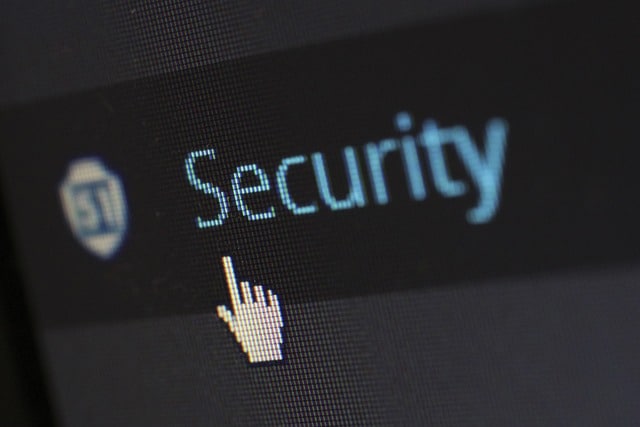Online learning has become an essential tool in education, particularly in light of the global pandemic. However, the rapid increase in remote learning has raised security concerns surrounding online learning platforms.
This article aims to explore the best practices for securing these platforms, focusing on three key areas: securing the platform itself, implementing strong authentication methods, and addressing privacy concerns.

The security of online learning platforms involves implementing robust measures to protect against unauthorized access and data breaches. Strong authentication methods play a crucial role in verifying user identities and reducing the risk of unauthorized access.
Additionally, privacy concerns related to data collection, storage, and sharing must be addressed. By implementing these best practices, educational institutions and online learning providers can create a safe and secure learning environment for students and educators alike.
Importance of Online Learning Security
The importance of online learning security cannot be overstated. With the increasing popularity of eLearning platforms, ensuring the security and protection of student data has become a critical concern. Online learning security refers to the measures taken to safeguard the confidentiality, integrity, and availability of online learning platforms and the data they handle.
One of the primary reasons for prioritizing online learning security is student data protection. Educational institutions collect and store a vast amount of sensitive student information, including personal details, academic records, and assessment results. Without proper security measures in place, this data becomes vulnerable to unauthorized access, misuse, or theft. Breaches in online learning security can have serious consequences, including identity theft, financial fraud, and reputational damage for both the institution and the students.
Moreover, online learning security is essential for maintaining the trust and confidence of students and their families. Students must feel confident that their personal information and academic progress are protected when engaging in online learning activities. Institutions that prioritize online learning security demonstrate their commitment to safeguarding student data, which can attract more enrollments and enhance their reputation.
Common Security Threats in Online Learning
When it comes to online learning, there are several common security threats that institutions and learners need to be aware of.
- Phishing attacks, where individuals are tricked into revealing sensitive information, pose a significant risk.
- Data breaches, which can result in the unauthorized access or disclosure of personal information, are another concern.
To mitigate these threats, implementing strong authentication methods and robust privacy measures is crucial.
Additionally, protecting against malware through regular system updates and antivirus software is essential to maintain the security of online learning platforms.
Phishing Attacks Prevention
Preventing phishing attacks is crucial to ensuring the security of online learning platforms. Phishing attacks are a common security threat that aims to trick users into disclosing sensitive information such as login credentials or financial details. To prevent these attacks, online learning platforms should implement robust security measures.
One effective method is to educate users about the signs of phishing attacks and how to identify suspicious emails or websites. Additionally, implementing multi-factor authentication can add an extra layer of security by requiring users to provide additional verification, such as a unique code or biometric authentication.
Regular security audits and updates to software and systems are also essential to address any vulnerabilities that could be exploited by phishing attacks.
Data Breaches Prevention
One important aspect of ensuring the security of online learning platforms is implementing measures to prevent data breaches. Data breaches can lead to the unauthorized access, theft, or exposure of sensitive information, causing significant damage to individuals and organizations. To effectively prevent data breaches, online learning platforms should employ a combination of technical and administrative controls. Technical controls include encryption, firewalls, and intrusion detection systems, while administrative controls involve regular security audits, employee training, and implementing strong password policies. Additionally, it is crucial to stay up-to-date with the latest security patches and updates to mitigate potential vulnerabilities. By implementing these preventive measures, online learning platforms can safeguard the privacy and security of their users’ data.
| Measures to Prevent Data Breaches | Description |
|---|---|
| Encryption | Protects data by converting it into a unreadable format using cryptographic algorithms. |
| Firewalls | Acts as a barrier between a trusted internal network and an untrusted external network, filtering incoming and outgoing network traffic. |
| Intrusion Detection Systems | Monitors network traffic and detects any suspicious activity or potential security breaches. |
Malware Protection Measures
Implementing robust malware protection measures is essential in ensuring the security of online learning platforms and mitigating common security threats.
Malware refers to malicious software designed to disrupt, damage, or gain unauthorized access to computer systems. Online learning platforms are particularly vulnerable to malware attacks due to the large number of users and the exchange of sensitive information.
To protect against malware, organizations should employ multiple layers of defense, including antivirus software, firewalls, and intrusion detection systems. Regular software updates and patches should also be applied to address any known vulnerabilities.
Additionally, users should be educated about the risks of malware and instructed to exercise caution when downloading files or clicking on suspicious links.
Implementing Strong Authentication Measures

To ensure the security of online learning platforms, it is essential to adopt robust authentication measures. Strong authentication plays a crucial role in verifying the identity of users and preventing unauthorized access. Traditional username and password authentication alone may not be sufficient to protect sensitive educational data and resources. Therefore, implementing additional authentication factors can significantly enhance security.
One widely adopted method is two-factor authentication (2FA), which requires users to provide two types of credentials to prove their identity. This typically involves combining something the user knows (such as a password) with something they possess (such as a unique code sent to their mobile device). By implementing 2FA, online learning platforms can add an extra layer of protection and reduce the risk of unauthorized access.
Another approach is the use of biometric authentication, which relies on unique physical or behavioral characteristics, such as fingerprints or voice recognition. Biometric authentication provides a high level of security as these characteristics are difficult to forge. However, it may require additional hardware or software integration.
Furthermore, the implementation of single sign-on (SSO) can simplify the authentication process for users while maintaining security. SSO allows users to access multiple online learning platforms using a single set of login credentials, reducing the need to remember multiple usernames and passwords.
Securing User Data and Privacy
Continuing the focus on ensuring the security of online learning platforms, attention must now be given to securing user data and privacy. As online learning becomes increasingly popular, it is crucial to implement robust measures to protect sensitive user information.
Here are three key steps to safeguard user data and privacy:
- Encryption: Utilize strong encryption techniques to protect user data during transmission and storage. Encryption ensures that even if data is intercepted, it remains unreadable and inaccessible to unauthorized individuals.
- Secure Storage: Store user data in secure, encrypted databases with proper access controls. Implementing strict access controls, such as role-based authentication, ensures that only authorized personnel can access and modify sensitive information.
- Privacy Policies: Clearly define and communicate privacy policies to users. These policies should outline how user data is collected, used, and shared. Additionally, ensure compliance with relevant privacy regulations, such as GDPR or CCPA, to protect user rights and maintain transparency.
By implementing these best practices, online learning platforms can instill trust in their users and demonstrate their commitment to protecting their data and privacy.
It is essential to prioritize user trust and security to ensure the continued growth and success of online learning platforms.
Role of Educators in Ensuring Online Learning Security
Educators play a crucial role in safeguarding the security of online learning platforms. As facilitators of these platforms, they have the responsibility to ensure that the necessary security measures are in place to protect the integrity of the learning environment.
One of the primary ways educators can contribute to online learning security is by promoting strong authentication methods. This can include implementing multi-factor authentication, where users are required to provide multiple pieces of evidence to verify their identity. Educators should also educate their students about the importance of using strong, unique passwords and regularly updating them.
Moreover, educators must be vigilant in addressing privacy concerns that may arise in online learning. They should familiarize themselves with data protection regulations and ensure that student data is collected, stored, and shared in compliance with these regulations. Educators should also encourage students to be mindful of their own privacy settings, such as sharing personal information only with trusted individuals and being cautious when participating in public forums or discussion boards.
In addition, educators should stay updated on the latest security threats and best practices in online learning security. They should attend training sessions and workshops to enhance their knowledge and skills in this area.

Best Practices for Secure Online Communication
When ensuring the security of online communication in the context of online learning, it is essential to implement best practices that prioritize data encryption and secure transmission.
Online communication can be vulnerable to various threats such as eavesdropping and data breaches, compromising the confidentiality and integrity of sensitive information.
To mitigate these risks, the following best practices should be followed:
- Implement end-to-end encryption: Utilize encryption protocols such as SSL/TLS to encrypt data in transit, ensuring that it remains secure and confidential. This prevents unauthorized access to the communication channel and protects against data interception.
- Use strong authentication methods: Implement robust authentication mechanisms, such as two-factor authentication (2FA) or biometric authentication, to verify the identities of users accessing the online learning platform. This helps prevent unauthorized access to sensitive information and ensures that only authorized individuals can participate in secure communication.
- Regularly update and patch software: Keep all software, including communication tools and learning platforms, up to date with the latest security patches and updates. Regularly patching vulnerabilities helps protect against potential security breaches and ensures that the communication channels remain secure.
Safeguarding Online Learning Platforms From Cyber Attacks
When it comes to safeguarding online learning platforms from cyber attacks, implementing robust cybersecurity measures is crucial.
These measures include utilizing secure authentication methods to ensure only authorized users have access to the platform and employing encryption techniques to protect sensitive data.
Additionally, preventing data breaches through regular security audits and updates is vital in maintaining the security and integrity of online learning platforms.
Cybersecurity Measures for Platforms
The protection of online learning platforms from cyber attacks is crucial for ensuring the security and integrity of educational materials and user data. To safeguard these platforms, certain cybersecurity measures must be implemented.
- Regular security assessments: Conducting regular security assessments helps identify vulnerabilities in the platform’s infrastructure and applications, allowing for timely remediation.
- Multi-factor authentication: Implementing multi-factor authentication adds an extra layer of security by requiring users to provide multiple forms of identification, such as a password and a unique verification code.
- Data encryption: Encrypting sensitive data, such as user information and educational materials, ensures that even if it is intercepted, it remains unreadable to unauthorized individuals.
Preventing Data Breaches
To enhance the security of online learning platforms and mitigate the risk of data breaches, robust measures must be implemented. These measures should safeguard sensitive user information and educational materials. Data breaches can result in unauthorized access to personal data, financial information, and intellectual property. This can lead to severe consequences for both individuals and institutions.
Online learning platforms should employ strong authentication methods, such as multi-factor authentication and encryption. These methods ensure that only authorized users have access to the system. Additionally, regular system updates and patches should be applied to address any security vulnerabilities.
It is crucial to implement strict access control policies. These policies limit user privileges and prevent unauthorized access to sensitive data. Ongoing monitoring and auditing of system logs can help detect and respond to any suspicious activities promptly.

Ensuring Data Encryption and Secure Storage
Data encryption and secure storage are essential for safeguarding sensitive information in online learning platforms. To ensure the highest level of security, online learning platforms should implement the following measures:
- Transport Layer Security (TLS): Implementing TLS protocols ensures that data transmitted between users and the platform is encrypted. TLS helps prevent unauthorized access to sensitive information during data transmission.
- Secure Socket Layer (SSL) certificates: SSL certificates establish a secure connection between the user’s device and the online learning platform. These certificates ensure that data exchanged between the user and the platform remains encrypted and protected from interception or tampering.
- Data encryption at rest: It is crucial to encrypt data when it is stored on servers or databases. This ensures that even if the data is compromised, it remains unreadable and useless to unauthorized individuals.
By employing these security measures, online learning platforms can minimize the risk of data breaches and protect the confidentiality and integrity of sensitive information.
It is important for platform administrators to regularly update and maintain these security measures to address emerging threats and vulnerabilities in the ever-evolving landscape of online security.
Educating Students on Online Safety Measures
Students should familiarize themselves with online safety measures to ensure a secure learning experience. By understanding and implementing these measures, students can protect their personal information and maintain a safe online environment. The table below outlines three essential online safety measures that students should be aware of:
| Online Safety Measure | Description | Importance |
|---|---|---|
| Strong Passwords | Using unique and complex passwords for online accounts can prevent unauthorized access. Students should create passwords that are at least 12 characters long, include a mix of letters, numbers, and symbols, and avoid using common words or personal information. | Strong passwords act as the first line of defense against hackers and protect sensitive data from being compromised. |
| Phishing Awareness | Students should be cautious of phishing attempts, which involve fraudulent emails or websites that trick individuals into providing personal information. They should verify the legitimacy of emails and links before clicking on them and avoid sharing personal information online. | Being aware of phishing techniques helps students identify and avoid potential scams, protecting their personal and financial information. |
| Safe Browsing | Students should use secure web browsers that offer features such as built-in phishing protection, automatic updates, and pop-up blockers. Additionally, they should avoid downloading files or clicking on suspicious links to reduce the risk of malware infections. | Safe browsing practices prevent malware infections and maintain the integrity of online learning platforms and personal devices. |
Regular Monitoring and Updates for Online Learning Security
Regular monitoring and updates are essential for maintaining the security of online learning platforms.
Real-time vulnerability scans help identify any potential weaknesses or vulnerabilities in the system, allowing for immediate action to mitigate the risk.
Additionally, implementing effective patch management strategies ensures that any identified security flaws or bugs are promptly addressed and fixed, reducing the chances of exploitation by malicious actors.
Real-Time Vulnerability Scans
Effective online learning security practices include implementing regular real-time vulnerability scans to ensure the ongoing monitoring and updates necessary for maintaining a secure learning environment. Real-time vulnerability scans are essential for identifying and addressing potential security weaknesses promptly.
Here are three key benefits of conducting real-time vulnerability scans:
- Proactive threat detection: Real-time vulnerability scans allow educational institutions to identify and address security vulnerabilities before they can be exploited by attackers.
- Timely updates and patch management: By conducting regular vulnerability scans, organizations can stay informed about the latest security patches and updates, ensuring that their online learning platforms are protected against known vulnerabilities.
- Compliance with industry standards: Real-time vulnerability scans help educational institutions meet regulatory and compliance requirements by ensuring that their systems are secure and protected against potential threats.
Patch Management Strategies
Implementing robust patch management strategies is crucial for maintaining the security and integrity of online learning platforms.
Patch management involves regularly monitoring and updating software applications to address vulnerabilities and fix bugs.
Online learning platforms can be vulnerable to cyber attacks, and patch management helps prevent unauthorized access and data breaches.
It is essential to establish a proactive patch management process that includes identifying and prioritizing patches based on their criticality and impact on the system.
Regular patch testing and deployment should be performed in a controlled environment to minimize disruption to online learning activities.
Additionally, organizations should have a defined patch management policy that outlines roles, responsibilities, and procedures to ensure consistent and timely updates.

Frequently Asked Questions
How Can Online Learning Platforms Ensure the Security of Student Data During Online Assessments?
Online learning platforms can ensure the security of student data during online assessments by implementing robust authentication methods, encrypting the data transmission, regularly updating security measures, conducting vulnerability assessments, and adhering to privacy regulations.
What Are Some Common Authentication Methods Used by Online Learning Platforms to Verify User Identity?
Online learning platforms commonly use authentication methods such as username/password, single sign-on (SSO), two-factor authentication (2FA), and biometric authentication to verify user identity. These methods enhance security and protect user data during online learning activities.
How Can Educators Encourage Students to Prioritize Online Safety and Security While Using Learning Platforms?
Educators can encourage students to prioritize online safety and security by emphasizing the importance of strong passwords, regularly updating software, avoiding suspicious links, and practicing safe browsing habits. Education and awareness play crucial roles in promoting responsible online behavior.
What Steps Can Online Learning Platforms Take to Protect Against Phishing Attacks Targeting Student Information?
Online learning platforms can protect against phishing attacks targeting student information by implementing robust email security measures, conducting regular security audits, educating users about phishing techniques, and implementing multi-factor authentication to verify user identities.
How Can Online Learning Platforms Ensure That Third-Party Applications Integrated With Their Platform Do Not Compromise User Data Security?
To ensure third-party applications integrated with online learning platforms do not compromise user data security, platforms should conduct thorough security assessments of these applications, implement robust data encryption protocols, and enforce strict access controls to limit unauthorized access to user data.
Conclusion
In conclusion, securing online learning platforms is of utmost importance to protect against unauthorized access and data breaches.
By implementing robust measures such as secure protocols, strong authentication methods, and addressing privacy concerns, educational institutions and online learning providers can create a safe and secure learning environment.
Regular monitoring and updates are also essential to mitigate the risk of cyber attacks.
By prioritizing online learning security, we can ensure the continued success and safety of remote education.
